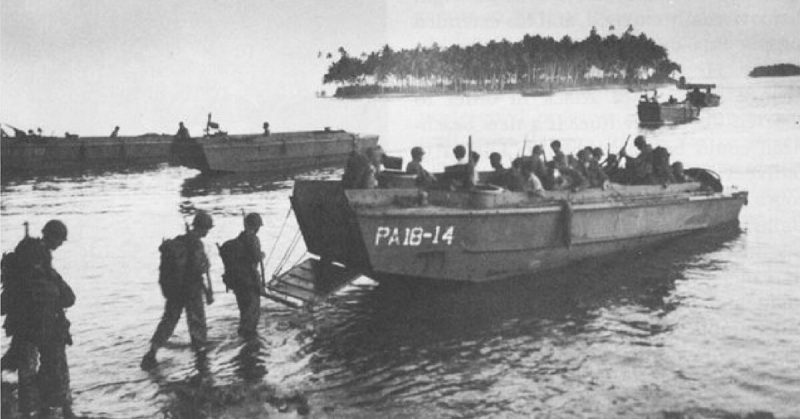The Second World War saw the advent of modern warfare. Navy fleets began using steel and aluminum aircraft to strike at one another. Submarines patrolled beneath the surface, attacking merchant shipping and military vessels alike.
Even with these modern metal war machines, a centuries-old industry was brought up to date for the war effort. Wooden warships have been in use since man was able to shape wood to his will. In WWII they served very specific roles, both on the frontlines and in auxiliary positions.
Here are four of the most common types of wooden military vessels from the war.
Torpedo Boats
The most famous of these were the American Patrol Torpedo or PT Boats. The majority of these were built by the Elco Naval Division, with 1-inch thick mahogany planking on mahogany frames. The boats were incredibly lightweight but had a strong frame.
On deck, they carried four torpedoes and two twin machine guns in turrets. They also had mountings for two 20mm cannons. When these boats were deployed, they carried more than enough firepower to get the job done, whether it was sinking a battleship or air defense.
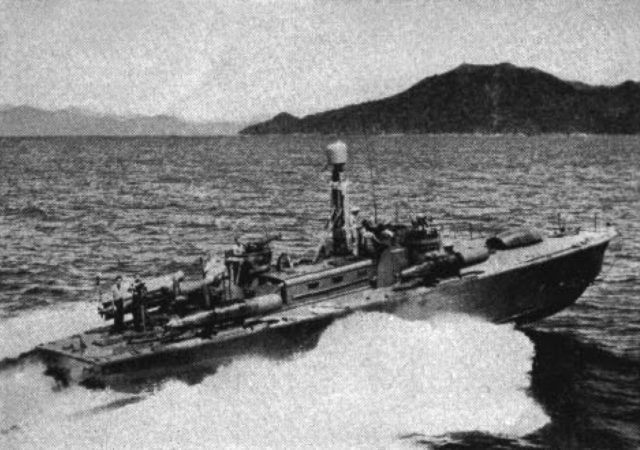
The British, Germans and Soviets all used similar vessels. The German Schnell-Boot, or fast boat, was one of the most efficient designs, with wooden planking over metal frames. They had a round-bottomed hull, limiting their overall speed, but allowing them to maintain high speeds without the pounding effect often encountered as a craft hit waves in the choppy North Sea. They operated mainly in the North Sea and Baltic but appeared in the Mediterranean and also threatened Allied ships during the invasion of Normandy.
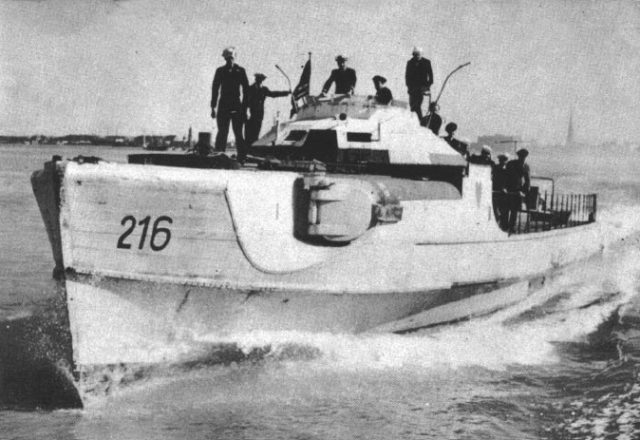
Minesweepers
To be lightweight and provide greater speed Torpedo Boats were made of wood . Minesweepers, however, required wood to avoid the magnetic detonators on many of the naval mines at the time. The United States built 481 of this sturdy craft, designated YMS. The “Y” stood for yard; the boats were intended for use in close to the shore. They were built in private yacht enclosures, which were already capable of producing large wooden craft.
Wooden boats are often more complicated to build than their steel counterparts. This craft could be made in barely over three months, a major feat considering their 136-foot length.
They carried two 20mm cannons and one 3”/50 caliber gun mount; providing them with just enough firepower to get out of a bad situation. They certainly were not designed to be frontline ships. Although not glamorous they were important for the war effort and proved their worth time and again. Many of the YMS class were sold to England and the Soviet Union. The Germans and Japanese also used wooden minesweepers of a similar size.
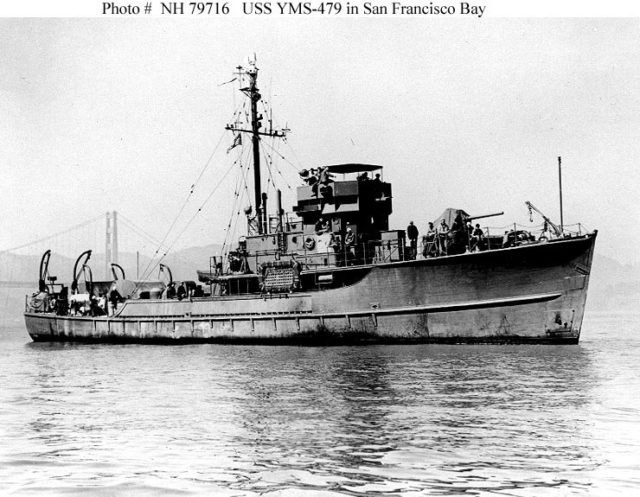
Recovery Craft
The Germans pioneered the use of a recovery vehicle for downed airmen. The British, however, perfected it, using a wide variety of wooden-hulled motor launches.
At first, the Royal Air Force did not have the necessary equipment, personnel, or know-how to operate aircrew recoveries effectively. In the early days of the Battle of Britain, July to October 1941, they lost 251 trained, and skilled pilots and crew. They recognized the need for such a service. The Air Sea Rescue Service was created, which would eventually employ a wide variety of vessels to perform its lifesaving missions.
The most common were the High-Speed Launch, or HSL (commonly called the Whaleback by crews). The double planked mahogany hulls were 63 feet long. They were lightly armed with .303 machine guns although this was modified later. A 20mm cannon was added after 1942.
The craft would patrol the channel, awaiting orders from RAF Coastal Command. When a downed pilot was reported, they would speed off in response, hoping to get to the pilot before hypothermia, or the Germans.
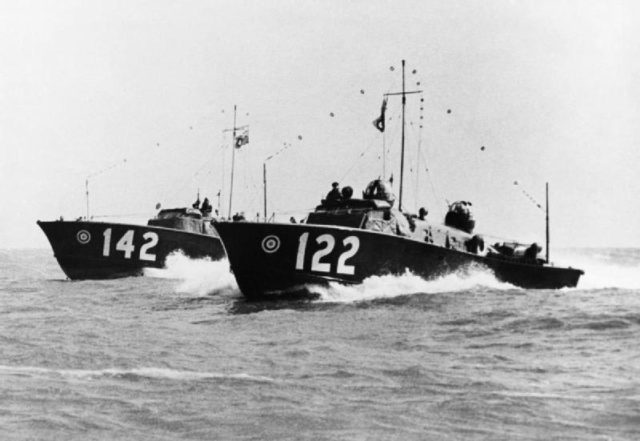
After 1943, the ASRS adopted a new craft, based on the Fairmile Type D Motor Launch. They were 115 feet long, well armed and very seaworthy. The Royal Navy were using the same craft as Motor Torpedo Boats, so the RAF had to wait for delivery.
Despite the delay, the ASRS fielded 55, and they proved very useful if somewhat slower than the HSLs. They made up for lack of speed with a greater range, better seaworthiness, and stronger armament. These boats served with the ASRS until the end of 1944. By then RAF Pilots were operating primarily over land, and the need for motor rescue launches diminished. Some were still in use after the war.
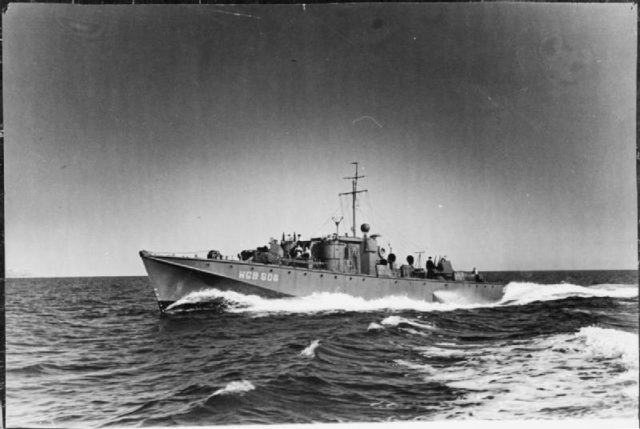
Landing Craft
Wooden hulled landing craft arguably won the war for the Allies. In the Gallipoli Campaign, the Royal Navy realized it needed dedicated landing craft, capable of quickly transporting large numbers of troops onto the shore. It was an American shipwright who would create the now famous design.
In the late 1930’s, the United States Marines were in search of a new way to get men onto and off a beach as quickly as possible. Andrew Higgins, a Louisiana boat builder, proposed his Eureka Boat. It was a shallow draft, mahogany boat, designed for the swamps off the Gulf Coast. The Marines liked the design. They perceived it could perform almost every task they asked, from beaching itself in a landing to fire support and close-to-shore patrols. Thus the Landing Craft, Personnel (Large) LCP (L) was created.
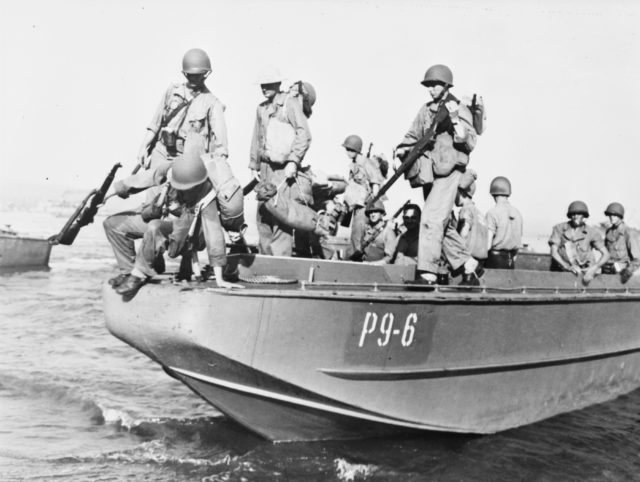
Following the actions of Japanese Marines in Manchuria and China, a new design was developed. The Japanese Daihatsu landing craft used an armored bow ramp to quickly disembark troops, as opposed to the LCP model, which had troops exit over the side. Higgins reworked the original LCP designs, before creating a new one; the Landing Craft Vehicle Personnel (LCVP).
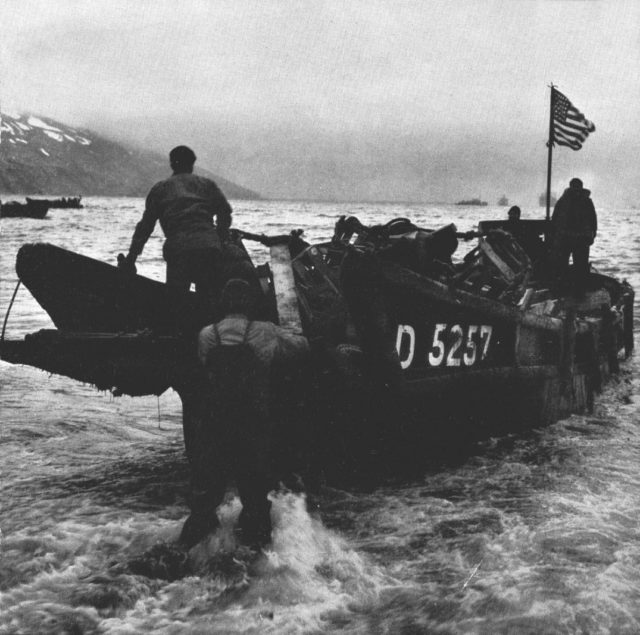
They could carry anything including troops, jeeps, and smaller engineering and assault vehicles. In various designs and sizes, they saw action across the globe, from the islands in the Pacific to North Africa, Italy, and Europe.
36 feet long they were made almost entirely of plywood, except for the gunner positions and steel bow ramp. These shallow-draft landing craft were able to drive directly onto a beach, unload their cargo or troops, and in a matter of minutes pull back to the mother ship.
Invasion forces could be landed in hours, rather than days, saving countless Allied lives.
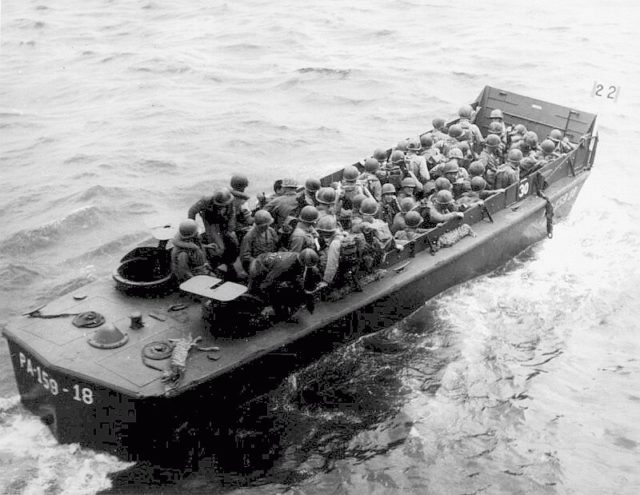
Wooden boats served valiantly around the globe during the Second World War. Their lighter weight, ease of repair, and seaworthiness made them excellent candidates for a wide variety of roles in wartime.
Today few are left, and wooden boats are an ever more rare sight.
